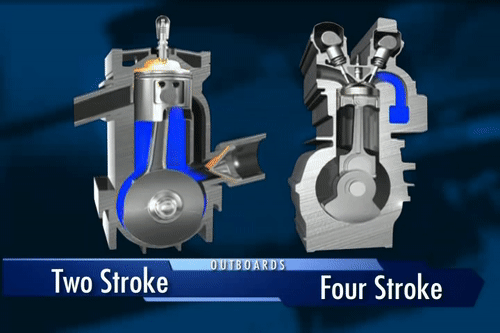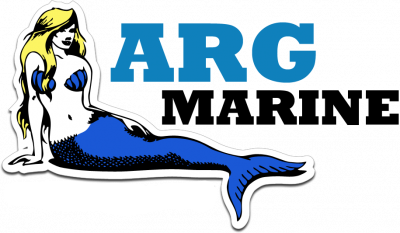ARG Marine Talks Two-stroke and Four Stroke

You may have wondered about the differences between two-stroke and four-stroke outboard motors if you are thinking about making a purchase. At first look, people often assume four-stroke motors are more powerful, and two-stroke motors are designed for speed. Despite this thinking, it is not always the case. Two and four-stroke outboard motors both have their pros and cons.
Located in Riviera Beach, the sales and service staff at ARG Marine are experts at helping customers decide how to power their boat. As South Florida’s premier outboard motor dealership, they represent a broad range of outboard boat motors for sale in Palm Beach County. Staff is more than happy to give a little history about outboards, explain the technology that has led to significant gains for both two- and four-stroke motors, and provide specifics about how engines work. They want customers to understand the unique characteristics of a purchase, including reliability, top speed, maintenance requirements, weight comparison, and fuel efficiency.
Two vs. Four: Common Misconceptions of Outboard Motors Explained
Much of what everyone thought about two and four-stroke motors has changed in recent years. Years ago, four-stroke engines were not as sporty or as performance-oriented. Two-strokes were lighter in weight when comparing the two types, offered a more rapid acceleration, were more affordable and had a lower power-to-weight ratios. For these reasons, the two-stroke dominated the market for years.
An early common concern with two-stroke motors was that they would use more fuel, so customers preferred the four-stroke for fuel efficiency and lower emissions. Four-strokes were thought to run smoother and quieter in comparison to the two-strokes. Until recently, due to expense and weight, four-stroke was not as widely accepted by boaters in the outboard market. In the past 20 years, however, both types of outboards have made significant advancements. Manufacturers have stepped up closely, commercially matching more closely in quality, emissions, and performance.
Differences to Consider in a Purchase
The most significant difference is the way they work internally. Two-stroke motors require oil to be blended with gas, so when the fuel runs through the engine, a small amount of oil helps with lubrication. Two-stroke motors typically run a couple of thousand hours or more with proper maintenance and care. The four-stroke engine functions the same as it does in a car with an oil filter and self-contained oil cavity. At a minimum, the lower unit oil in a four-stroke motor requires an oil change after approximately 100 hours so there is a bit more maintenance with oil changes than the two-stroke.
Weight may be a concern, depending on the way a boat is used as well as the size, because small boats tend to be more weight sensitive. The two-stroke used to be preferred as they were significantly lighter. Innovation in the types of materials parts has helped four-stroke motors become more lightweight and faster. This has improved their ability to be more competitive in the industry. ARG can advise you on which engine is best for how you use your boat.
The Most Important Factor
When selecting a brand or type of motor, the biggest factor is whether your local dealer can provide parts, service, and maintenance. Boats are similar to cars in that it can be challenging if the shop which works on them is hundreds of miles away. ARG carries engines from Suzuki, Mercury, Yamaha, Evinrude, and Honda, representing the best available in the boating industry. When you are ready to buy a new or used outboard motor, call, email, or come into ARG Marine at 3562 Dr. Martin Luther King Blvd. in Riviera Beach, Florida. For convenience, customers also can check us out online and follow us on Facebook.
